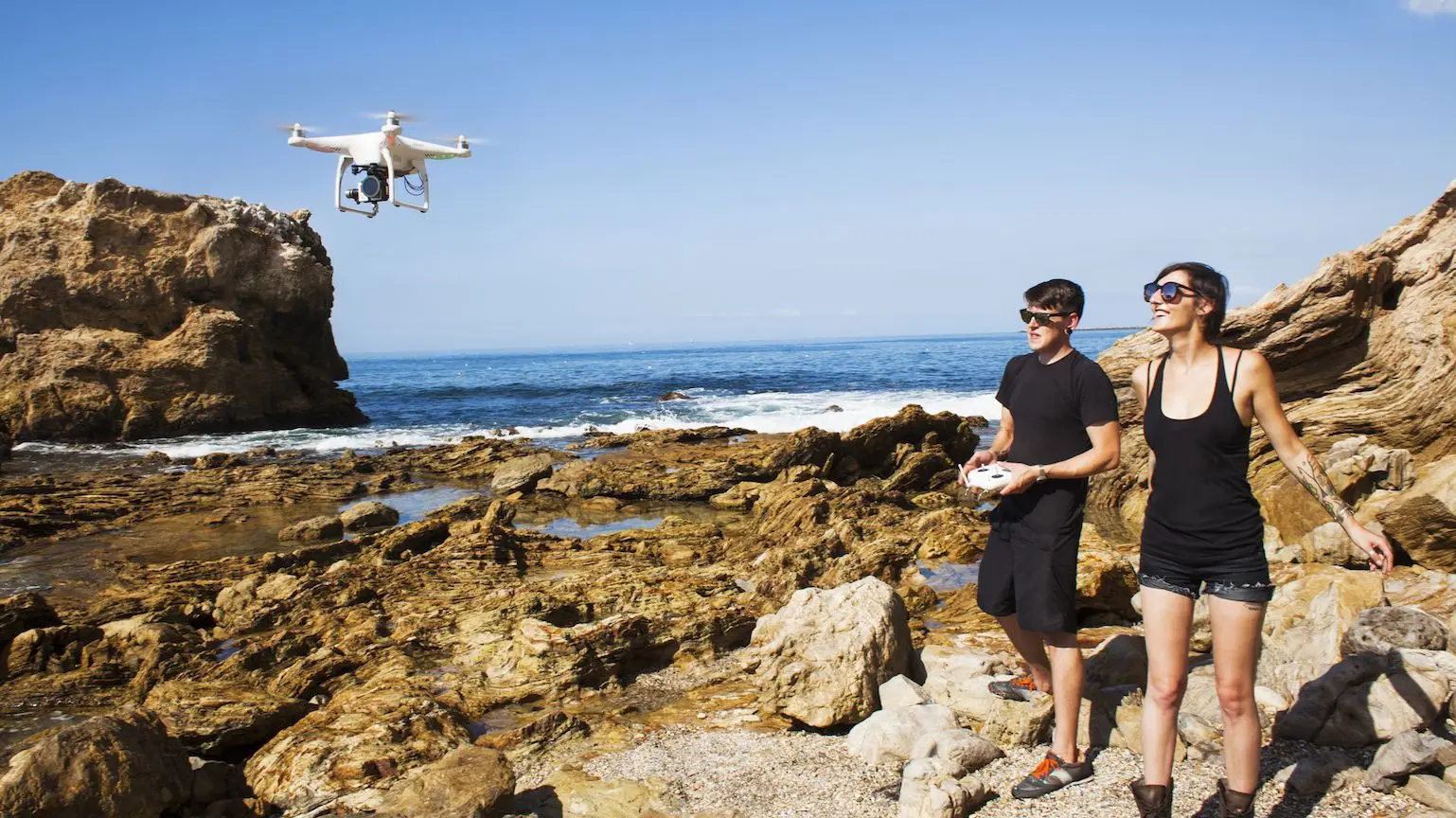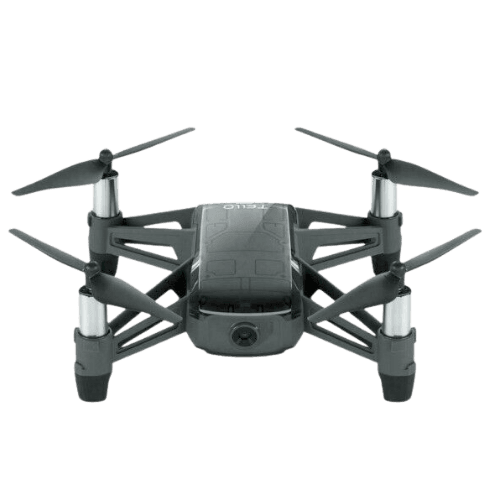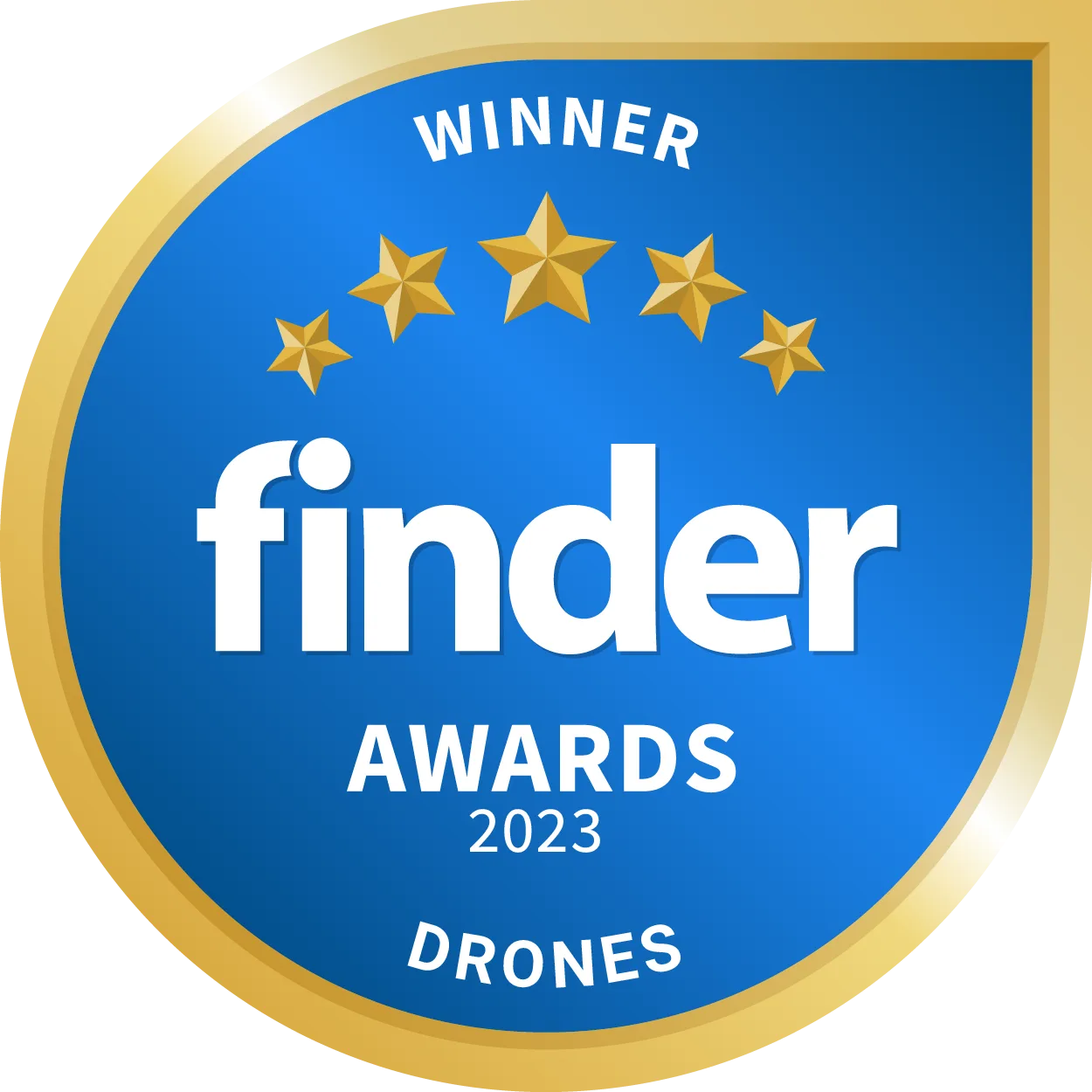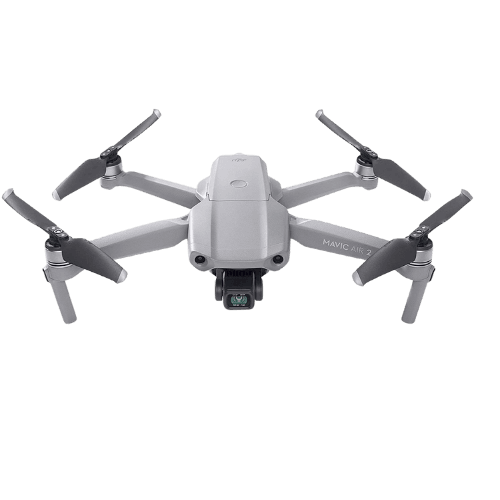Top Pick for
Overall drone


Top Pick for
Overall drone

Top Pick for
Drone for beginners

Top Pick for
Drone for kids

Top Pick for
Drone with a camera

Finder's team looked through dozens of item listings and selected these top picks based on product information and reviews from customers online. For each category, we thoroughly analysed key features and determined which drones would be the most suitable for each use case.

With an impressive 4.8 out of 5 rating from Google reviews, the DJI Mini 2 is, overall, the best drone currently available on the market. At its $749 price-point, the compact flying machine hits the sweet spot between quality, price, performance and features.
The Mini 2 was designed for those who are always on the go. The drone's foldable design makes it easily packable. And, with DJI's small multirotor weighing in at just under 249 grams, it has the perfect footprint for travellers.
The Mini 2 lacks obstacle avoidance sensors, meaning you'll have to keep an even more watchful eye over the drone to ensure it doesn't slam into anything mid-flight. Since the drone sports none of these additional eyes, DJI's Active Track functionality is also absent. Unfortunately, this means automatic object tracking isn't an option.
Given its size, the DJI Mini 2 has an impressive camera. The 12MP sensor supports 4K video recording at up to 30 frames per second and touts four-times zoom, so you don't have to get dangerously close to your subject. DJI's QuickShots functionality allows you to capture video in pre-programmed patterns, making for great footage no matter if you're a beginner or a pro. Unfortunately, there's no HDR support on this model, so you might miss out on capturing those crisp colours.
Several customers online said the drone was easy to get the hang of and fly. Others stressed the importance of being gentle with the drone due to its lack of object avoidance and mentioned that grabbing a second battery wasn't the worst idea.

In the 2023 Finder Retail Awards, we surveyed over 34,000 Australians about their retail purchases to discover which were their favourite brands across 170 product categories and over 1,200 total brands.
For drones, DJI was ranked 1st for value for money, 1st for performance, 1st for ease of use and 1st for features and design.
6 brands were rated across these decision criteria.

Boasting a formidable 4.4 out of 5 rating from thousands of reviews on Google, the Ryze Tello is the perfect drone to pick up if you're learning the ropes of drone flight.
It's a good value pick up at the retail price of $169, but with sale prices and discounts sometimes bringing the price-point closer to $100, the drone packs a serious punch for the money. You can also rest assured knowing that your purchase was a good one as it's powered by technology from the world's leading civilian drone manufacturer, DJI.
For the price, you'd expect the Tello to have some short-comings, and it does. Ryze says the drone has just 13 minutes of flight time at most, and over time that will decline as the battery wears. Thankfully, the drone's design makes it swappable, so you can pick up spare batteries for added flight time, provided you change the batteries every quarter-hour or so. And, if they get bashed up a bit, those propellers are also replaceable.
The Tello sports an acceptable camera supporting 720p video and 5 MP photos. The drone's "EZ Shots" mode allows for coordinated videos in several social-media friendly modes such as circle and 360.
Several customers said that the Tello was great value for the money, and noted how easy it was to use. Still, other reviewers also mentioned that the camera quality of the drone was a little bit of a let-down and also mentioned how it struggles in windy environments because of its lightweight design.

With a 4.2 out of 5 star rating on Amazon, the HASAKEE Q8 FPV is the best drone you can pick up today for under $100.
HASAKEE's budget-friendly drone has a design aesthetic that means you definitely won't lose sight of the compact multirotor, especially with the illumination of the protective circle around it. Despite the enhanced visibility, the bright design won't be for everyone. Unfortunately for those looking for a more minimal design, those drones tend to cost significantly more.
The Q8 FPV can take videos and photos, which is a bonus at the sub-$100 price point. Better yet, the media is saved straight to your mobile device for convenience.
If you're looking for impressive battery life, the Q8 FPV is not the drone for you. HASAKEE's brightly-lit drone won't handle more than 10 minutes of flight time on its measly battery. Speaking of power, customers have said that it doesn't come with a charging brick, just the USB cable. They also say that the 4 AAA batteries necessary for the controller aren't included, either.
Even though the Q8 FPV's propellers are guarded by the light strip that wraps around the drone, replacements are provided in the box in case the originals are damaged mid-flight.
In reviews, several customers said the Q8 FPV was fun to play with and that for the price, it's quite capable. Other consumers recommended picking up a spare battery to get the most use out of the nimble drone.

Built specifically for teaching your little ones about programming, Ryze's Tello Edu is a slightly modified version of the original. Despite its higher price, its additional learning-focused features make the drone the best drone for kids.
Ryze's education-focused drone keeps all of the stand-out features of the Tello, such as swappable parts, easy-to-use controls and a decent camera but adds a gamut of new features. The Tello Edu can be programmed more extensively, with an upgraded development kit allowing young engineers to move around and even perform acrobatics. You can also program up to four Tello Edu drones in a swarm, allowing for coordination from the one device. Ryze manages to do this all while keeping the price competitive with other options on the market.
Both Tello's main app and the Tello Edu app are compatible with the drone, giving your kids the freedom to choose between casually flying and learning. Users can't use both apps at once, and if you're switching from one to the other, the Tello Edu will need restarting.
If your kids aren't aspiring programmers, the standard version of the Ryze Tello is still an affordable and fun-filled option for kids. There's really no reason to grab the Edu version if you're not looking to use the upgraded programming functionality with the enhanced SDK or if you're not going to program a swarm of the little things.
In the 2023 Finder Retail Awards, we surveyed over 34,000 Australians about their retail purchases to discover which were their favourite brands across 170 product categories and over 1,200 total brands.
For drones, Ryze was ranked 4th for value for money, 3rd for performance, 4th for ease of use and 3rd for features and design.
6 brands were rated across these decision criteria.

With review scores consistently above 4 out of 5 on online stores across Australia and review sites, DJI's mid-range Mavic Air 2 is the best drone with a camera you can buy.
When it comes to media creation, the Mavic Air 2 doesn't disappoint. Its 48MP camera can take high-quality aerial images, and HDR support makes for more vibrant colours. Its ability to record 4K video at 60 frames per second is what sets the Mavic Air 2 apart from its competition, even within DJI's product line. At that resolution, most drones can typically only capture footage at 30 frames per second.
Another standout camera feature is the Mavic Air 2's ability to record 8K hyperlapse footage, making for ultra-sharp video with impressive effects. With DJI's QuickShots functionality also included, pre-programmed shots can be filmed to create easily shareable, good looking content.
The Mavic Air 2 sports the latest version of DJI's obstacle avoidance technology, APAS 3.0. The system uses several sensors to guide the drone out of the way of any obstacles while also allowing it to track and follow targets. Because those fancy object avoidance sensors aren't keeping an eye on the side or above the drone, you'll still have to be paying plenty of attention.
Customer reviews mentioned that the Mavic Air 2 handles high winds well, which is fitting given "air" is in the name. Some professional reviewers said that the drone's software has some limitations, such as that editing in the mobile app is limited to a resolution of 1080p.
Save on DJI Mavic Air 2

In the 2023 Finder Retail Awards, we surveyed over 34,000 Australians about their retail purchases to discover which were their favourite brands across 170 product categories and over 1,200 total brands.
For drones, DJI was ranked 1st for value for money, 1st for performance, 1st for ease of use and 1st for features and design.
6 brands were rated across these decision criteria.
Originally developed for military applications, drones, or unmanned aerial vehicles (UAVs), are becoming an increasingly popular pastime. Most drones on the market are quadcopters, with four rotor blades, though hexacopter and octocopter configurations exist. Drones are great for photography and recreational flying, and racing circuits are popping up across the world. More than anything, flying them is a lot of fun!
Consumer drones can be broadly broken down into four categories. The type for you depends on what you want to use it for and how much you are willing to spend.
There are strict laws governing drone use in Australia, so ensure you'll be allowed to fly it where you intend to before purchasing one. The Civil Aviation Safety Authority (CASA) has a list of the restrictions that you should read in detail, but we'll summarise the basics.
For drones lighter than 2kgs (which covers most consumer drones), you must not fly in the following areas:
Laws differ across the world. For example, in the European Union, you're allowed to fly up to 152 metres high. Make sure you know the local laws when travelling with your drone. It's also a good idea to check a CASA-approved airspace app, so you can ensure where you're flying is legal.
When choosing a drone, consider the following factors:
Flight time on a single charge ranges from 5 minutes to around 30. Manufacturer estimates are always on the generous side, so expect less in real-world flying conditions. You also need to allow time for the drone to return to you to change batteries, so effective flying time is shorter still.
If your drone is for professional use, don't skimp here. When you consider that it can take more than two hours to charge a battery, you'll want to have a few spare batteries in your pack. If you can afford it, always go for the larger battery.
Do you want a drone that comes with a dedicated controller – typically a box with two flight sticks – or do you want to fly using an app and the touchscreen on your phone? The former provides greater control and tactile feedback, but the latter is more portable. Professionals tend to prefer dedicated controllers because there's a slight response lag when using a phone, but mobile is still a viable approach for most purposes except racing.
Drones come with either a fixed camera or the ability to attach different ones. If you opt for a fixed model, make sure it's a quality camera because you won't be able to upgrade it later. Fixed camera models go up to 4K resolution. Some come with optical zooms, but they cost more.
If photography and filming is a serious hobby, or you're intending to gather footage for commercial purposes, you'll want a drone with a decent gimbal. These stabilise the camera across multiple axes, allowing for smoother video and sharper photos in windy conditions.
If you're new to the hobby, you should get a drone with advanced safety features like mandatory tutorials, auto-takeoff, auto-landing and object-avoidance technology so you don't crash into trees. If you're losing control, being able to initiate an automatic return using the onboard GPS can be the difference between landing and losing your expensive new toy.
Some toy drones only have a range of 20-30 metres, more than enough to have fun at home or the park. Advanced drones have an effective range of a few kilometres (top-end models currently max out at around seven kilometres). Remember, though, this can be a moot point because of the law – if you can't see it, you can't fly it.
Let's be realistic: if you're starting out, you're going to crash – quite a bit. Rotor blades are the part most likely to need replacing, so make sure you pick up some spares.
DJI |
8.17 |
4.46 |
4.22 |
4.44 |
4.51 |
4.44 |
|---|---|---|---|---|---|---|
Xiaomi |
7.55 |
4.06 |
4.27 |
4.06 |
4.09 |
4 |
GoPro |
7.53 |
4.08 |
3.93 |
4.05 |
4.25 |
4 |
Kogan |
7.51 |
4.14 |
4.03 |
4.08 |
4 |
4.11 |
Zero-X |
7.37 |
4.2 |
3.87 |
4 |
3.93 |
3.87 |
Parrot |
7.28 |
4.06 |
4.19 |
3.94 |
4.25 |
3.81 |
Other |
6.49 |
3.75 |
3.92 |
2.17 |
3.42 |
3.17 |




We've researched and tested the 12 best wireless chargers for various needs.
These are the 9 best turntables online, from the best cheap option to the top model for beginners.
These are the best tablets for kids you can buy right now in Australia.
There's still room in your life for a dedicated MP3 player. Here are the 6 best models in Australia, based on exhaustive research from our experts.
Learn about some of the top online course platforms that make it easy to create, deliver and sell your lessons.
We’ve rounded up the 9 best power banks you can get right now in Australia.
We’ll help you find the best paper shredder to keep your confidential information safe.
From the best premium AAs to the most reliable cheapies, these are the top rechargeable batteries available online.
From the best option for snorkelling to the top model for kids, these are the 9 best underwater cameras available online.